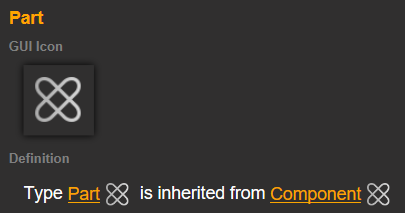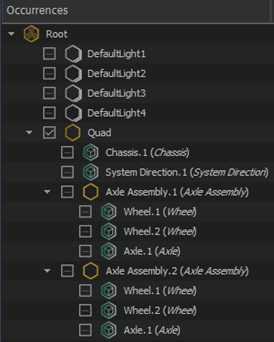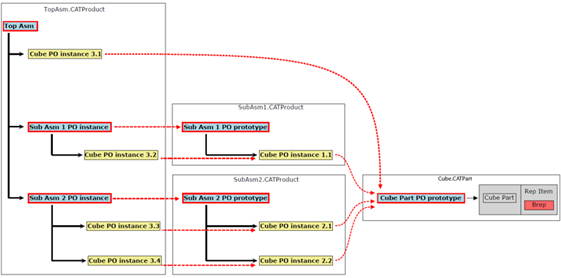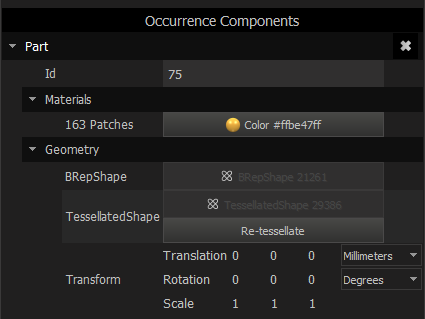Basic Structures In a PiXYZ Scene
To get started, please check also the following topics about PiXYZ concepts and vocabulary:
PiXYZ objects types
- All PiXYZ objects are called Entities
- In Python Scripting, an entity is defined by a unique numerical identifier, or ID
- The API Documentation shows inheritance of entity types
For example, a Part is inherited from Component, so if a function wants a Component parameter you can give it a Part:

PiXYZ Scene occurrences
- Product Structure / Scene nodes are Occurrences
- An occurrence can have children occurrences
- An occurrence has properties:
- Name
- Transform
- Material
- Visible
- An occurrence owns components (maximum one of each type)

PiXYZ Scene components
- List of components types:
- Part
- PMI
- Light
- Visual Behavior
- Interaction Behavior
Prototyping
- Each occurrence can have a prototype, a prototype is also an occurrence
- A prototype is a kind of pattern
- An occurrence can override properties of its prototype occurrence

PiXYZ Scene Part
- A part contains geometry, contained in a Shape
- A part may contain one or two shapes:
- A BRepShape with CAD representation
- A TessellatedShape with Mesh representation
- The Active shape is the tessellate shape if it exists, the BRep shape otherwise.
- A part has a local transformation matrix

Common functions for Scene handling
- Get the type of an entity as a String:
core.getEntityTypeStr(entity
- Get/Set a property value (All property values are Strings):
nameValue = core.getProperty(entity, « Name »)
core.setProperty(entity, « Name », « NameValue »)
- List available properties on an entity
core.listProperties(entity)
Other Python examples
- Occurrence list with the root: [scene.getRoot()]
- Occurrence list with all parts: scene.getPartOccurrences()
- Occurrence list with selection: scene.getSelectedOccurrences()